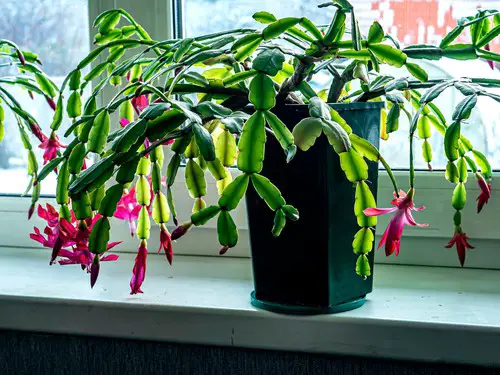If you are in search of an easy plant to grow and add a gorgeous touch to your home or garden, then cactus plants are perfect. Although cacti are easy to grow and maintain, you may get concerned about your plant’s health. For example, cactus growing arms often causes concerns to several new and experienced plant parents.
So, is it a typical behavior and what can you do about it?
Cacti are fascinating plants that come in a variety of shapes and sizes. One of the most exciting features of cacti is their ability to grow arms. These arms can take many forms, from small stubs to long branches, and can dramatically change the cactus’s appearance.
The growth of arms on cacti is a natural process that occurs over time. While some cacti never grow arms, others will start to develop them as they mature. The reasons why cacti grow arms are varied and complex, but they are often related to the plant’s need for light, water, and nutrients.
Key Takeaways
- Cacti can grow arms as they mature, but not all cacti will develop them.
- The growth of arms is related to the plant’s need for light, water, and nutrients.
- Proper care, including adequate sunlight, water, and nutrients, can help encourage cacti to grow healthy arms.
Cactus Growing Arms
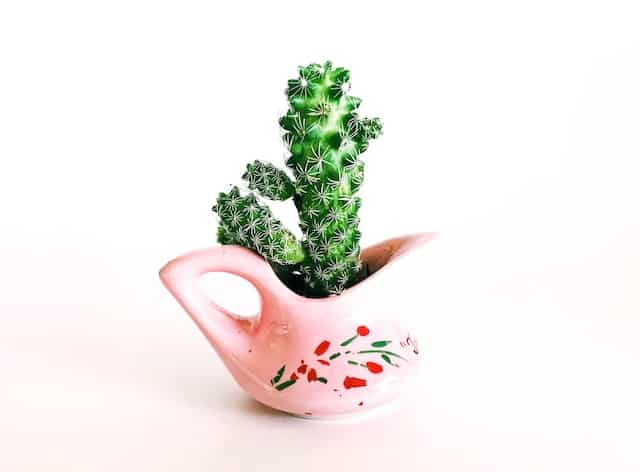
Cactus growing arms is a natural process that occurs in some cacti species. Arms are lateral branches that grow out of the main stem of the cactus, giving it a unique appearance. While not all cacti grow arms, some species are known for their ability to produce them. This section will discuss the factors affecting cactus arm growth and how to encourage it.
Factors Affecting Cactus Arm Growth
Several factors can affect the growth of cactus arms. The most common reason for cactus arm growth is age. As a cactus matures, it eventually produces lateral buds that sprout into new branches and then develop into arms. This process can take many years and is influenced by several environmental factors.
Another factor that affects cactus arm growth is the amount of light the cactus receives. If a cactus is not getting enough light, it may grow arms to reach the light source. On the other hand, if a cactus is getting too much direct sunlight, it may develop arms to protect itself from the heat.
The amount of water a cactus receives can also affect arm growth. If a cactus is not getting enough water, it may start to grow arms as a way to search for water. However, overwatering can inhibit arm growth or stop it altogether. It is essential to find the right balance when watering your cactus.
How to Encourage Cactus Arm Growth
If you want to encourage your cactus to grow arms, there are several things you can do. Firstly, make sure your cactus is getting enough light. If your cactus is not getting enough sunlight, consider moving it to a brighter location or providing artificial light.
Secondly, make sure your cactus is getting the right amount of water. Do not overwater your cactus, as this can cause root rot and slow down arm growth. Instead, water your cactus when the soil is dry to the touch.
Finally, consider fertilizing your cactus. While cacti do not require frequent fertilization, adding a slow-release fertilizer can help encourage arm growth.
In conclusion, cactus growing arms is a natural process in some cacti species. Factors affecting cactus arm growth include age, light, and water. To encourage cactus arm growth, ensure your cactus is getting enough light, water, and fertilizer.
Watering and Nutrients
Watering Schedule
Cacti are known for their ability to survive in hot and dry conditions, but this does not mean that they do not need water. As mentioned earlier, over-watering is a common mistake that can lead to root rot and other issues. It’s vital to find the right balance between too much and too little water.
The watering schedule for cacti depends on several factors, such as the type of cactus, the size of the pot, and its environment. It would be best to water your cacti when the soil is completely dry. The accepted rule of thumb is sticking a finger into the soil or using a moisture meter.
In addition, cacti may need to be watered more frequently during the growing season, usually spring and summer. In the winter, when they are dormant, they require less water.
Nutrient Requirements
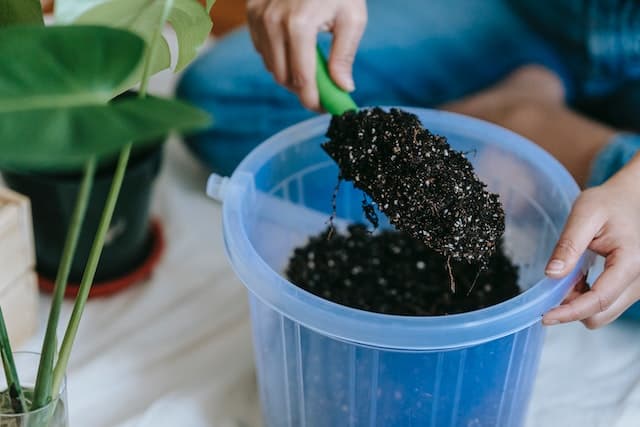
Cacti do not require a lot of nutrients, but they do need some to grow and thrive. Therefore, fertilize sparingly and only during the growing season. Note that applying too much fertilizer can lead to overgrowth and weak stems.
Nonetheless, cacti primarily need nitrogen but also require other minerals such as phosphorus and potassium. You can provide these through specialized cactus fertilizers or a balanced fertilizer with a lower nitrogen content. Following the instructions on the fertilizer package is essential, as over-fertilizing can be harmful.
In addition to fertilizing, cacti can benefit from organic matter such as compost or well-rotted manure. It’s best to add such organic matter to the soil when repotting. Alternatively, you can use them as a top dresser. However, avoiding using soil mixes that are too rich in organic matter is vital, as this can lead to over-watering and root rot.
Overall, cacti are low-maintenance plants that require minimal watering and fertilizing. Cacti can grow healthy and strong by following a proper watering schedule and providing the right nutrients.
Light and Temperature
Light Requirements
Cacti are desert plants that require plenty of direct sunlight to grow properly. When growing indoors, placing your cactus in a location with plenty of sun is essential. A south-facing window is the best place to put your cactus. If you cannot provide enough sunlight, consider using grow lights to supplement the natural light.
It is important to note that the direction of the light also plays a role in the growth of cacti. If you keep your cacti at an angle where the light bounces, it will grow an arm in the direction where the light reaches. Therefore, if you want your cactus to grow in a particular direction, place it accordingly.
Temperature Tolerance
Cacti are adapted to thrive in hot and dry conditions. They can tolerate a wide range of temperatures but prefer warm temperatures during the day and cooler temperatures at night. During the summer, keep your cactus in a warm and dry location; during the winter, keep it in a cool spot.
It is important to note that during the winter, cacti enter a period of dormancy and require less water and sunlight. As a result, water your cactus less and move it to a cooler location to allow rest during this time.
Summing it up, providing the right amount of light and temperature is crucial for the growth and health of your cactus. Make sure to place your cactus in a location that receives plenty of direct sunlight and keep it in a warm and dry spot. Adjust the light and temperature according to the season, and your cacti needs.
Soil and Repotting
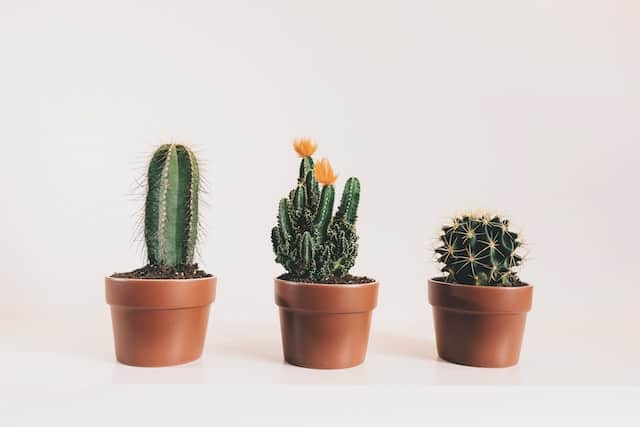
Cacti are known for their ability to thrive in harsh conditions with minimal care. However, proper soil and repotting are crucial for their ultimate growth and longevity. This section will cover the soil requirements and repotting tips for cacti.
Soil Requirements
Cacti require well-draining soil that allows excess water to drain quickly. Soil that retains moisture for too long can lead to overwatering, which can cause root rot and other issues. The ideal soil for cacti is a mix of sand, gravel, pumice, and perlite. This soil provides excellent drainage and prevents water from accumulating around the roots.
It’s important to note that cacti do not require nutrient-rich soil. Too much nitrogen can be harmful to cacti. Therefore, a soil mix designed explicitly for cacti or succulents is best.
Repotting Tips
The accepted rule of thumb is repotting your cactus plants every 2 to 4 years, depending on their growth rate and size. Additionally, the best time to repot a cactus is during its active growth period in January or February. Repotting during this time will allow the cactus to recover quickly and minimize the risk of damage.
When repotting a cactus, use a well-draining soil mix and a pot with drainage holes. The container should be larger than the current one to allow for growth. It’s also essential to handle the cactus carefully and wear protective gloves to avoid getting pricked by the spines.
After repotting your plant, don’t water the cactus for a few days to allow the roots to settle in. Water your cactus plant only after it has adapted to its new container.
Proper soil and repotting are essential for the health and growth of cacti. Cacti can store water efficiently and grow strong and healthy by providing the appropriate conditions and soil mix.
Spines and Trauma
Cacti are known for their spines, which can cause painful puncture wounds if not handled carefully. The spines or glochidia can easily puncture the skin with only minor pressure (i.e., bumping or touching the cactus).
Note that different types of cacti have different kinds of spines. Some cacti have long, thin, and flexible spines that you can easily brush off, while others have short, barbed spines that can be difficult to remove.
Spine Types

Cactus spines come in a variety of shapes and sizes. Some spines are long and thin, while others are short and thick. In addition, some spines are straight, while others are curved or hooked. The spines of some cacti are full of tiny barbs that make them difficult to remove from skin or clothing.
One way to prevent cactus spine injuries is to choose cacti with shorter, less-prickly spines. For example, the Golden Barrel Cactus has short, golden spines that are easy to remove from skin and clothing.
Another way to prevent cactus spine injuries is to handle the cactus with care by wearing gloves and using a thick piece of cardboard or aluminum foil to protect your hands while handling the cactus.
Preventing Trauma
Cactus trauma can occur when a cactus is bumped or knocked over, causing it to break or lose its spines. This can be especially problematic for cacti that are growing skinny arms. If a cactus is not getting enough light, it will often grow taller and produce new arms to reach the sun.
However, if the cactus is bumped or knocked over, the arms may break off, leaving the cactus with fewer resources to get sunlight. Handling your plant with care is the most effective way to prevent cactus trauma.
For example, when moving a cactus, use a thick piece of cardboard or aluminum foil to protect the cactus from bumps or knocks. It is also vital to keep cacti in a stable location where they are less likely to be knocked over.
Overall, cacti are hardy plants that can thrive in various conditions. Still, handle them with care to avoid injury and trauma. Choosing cacti with shorter, less-prickly spines and carefully taking care of them makes it possible to enjoy these unique and fascinating plants without putting yourself or the cactus at risk.
Flowers and Fruit
Cacti are not only interesting for their unique shapes but also for their beautiful flowers and delicious fruit. This section will discuss the different types of cacti that produce flowers and fruit.
Flowering Cacti
Cacti are known for their beautiful flowers, which come in various colors, shapes, and sizes. Some cacti produce white flowers, while others produce pink, red, orange, or yellow flowers. What’s more, cacti flowers are usually quite large and showy and abundant during the flowering season.
One of the most popular flowering cacti is the Christmas cactus (Schlumbergera spp.), which produces stunning red, pink, or white flowers during the holiday season. Another famous cactus is the Easter cactus (Hatiora gaertneri), which grows beautiful pink or white flowers in the spring.
Fruiting Cacti
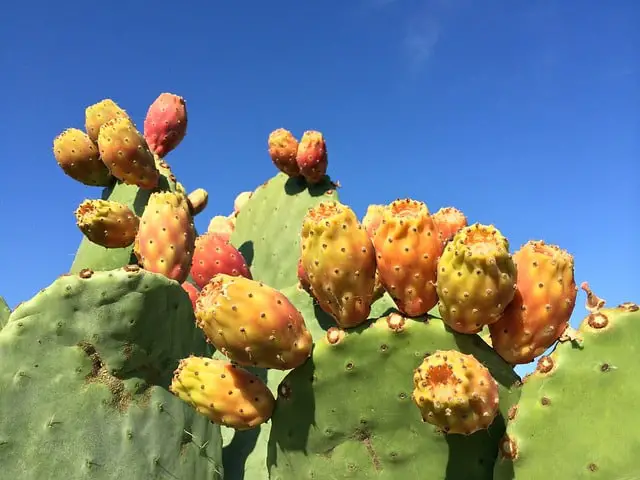
In addition to their beautiful flowers, many cacti produce delicious fruit that is useful when preparing meals. Cactus fruits come in various colours, including red, orange, yellow, and green. They are typically sweet and juicy; you can eat them raw or cooked.
One of the most popular fruiting cacti is the prickly pear cactus (Opuntia spp.), which produces delicious red or green fruit mainly used in salads, smoothies, and jams. Another famous fruiting cactus is the dragon fruit cactus (Hylocereus spp.), which produces stunning pink or white fruit perfect for desserts.
Overall, cacti are fascinating for their unique shapes, beautiful flowers, and delicious fruit. Whether you are a plant enthusiast or a food enthusiast, cacti will provide endless enjoyment.
Survival and Lifespan
Surviving in Harsh Conditions
Cacti are known for their ability to survive in harsh conditions. They are adapted to hot and dry environments and can even thrive in the hardy Sahara Desert, one of Earth’s hottest and driest places. Their survival is due to their ability to store water in their thick stems and leaves, which allows them to survive for long periods without rain.
However, cacti are not invincible. Frost can be deadly to some cactus types, especially those from southern Arizona. When temperatures drop below freezing, the water inside the cactus freezes and expands, causing the plant to burst. Therefore, to protect your cacti plant against frost, it is crucial to cover it with a blanket or tarp or move it indoors during cold weather.
Lifespan of Cacti
The lifespan of cacti varies greatly depending on the species. Some cacti, like the moon cactus, have a relatively short lifespan of only a few years. Others, like the saguaro cactus, can live for over 150 years. A cactus growth rate primarily dictates its lifespan. That is, slow-growing cacti tend to live longer than fast-growing ones.
In addition to growth rate, the lifespan of a cactus is also affected by external factors such as collection. If you collect wild cacti, they tend to have a shorter lifespan than those grown in a nursery. This is because wild cacti have already endured harsh conditions and may unwind weakly from the stress of being uprooted and transported.
Overall, cacti are hardy plants that can survive in harsh conditions. Their ability to store water and adapt to their environment allows them to thrive in hot and dry climates. However, they are not invincible and can be susceptible to frost and other external factors. The lifespan of a cactus varies greatly depending on the species and external factors such as collection.
Propagation and Care
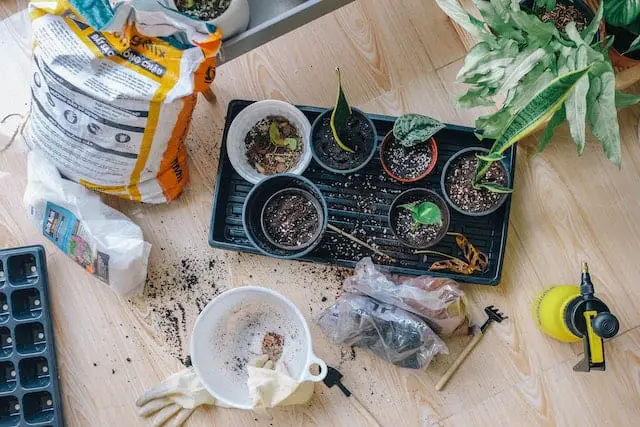
Vegetative Propagation
Cactus plants are known for their unique ability to propagate through vegetative means. They can produce new plants from parts of the parent plant, such as cuttings or offsets. Vegetative propagation is a great way to propagate cactus plants because it ensures that the new plant will have the same characteristics as the parent plant.
Here are clear and easy steps for propagating your cactus plants through cuttings:
- Select a healthy and mature plant.
- Cut a stem from the parent plant using a sharp and clean knife or scissors.
- Allow the cut to dry for a few days to prevent rot.
- Once you ensure the cut has dried, plant it in a well-draining potting mix and water sparingly until the roots have formed.
Cactus plants can also produce offsets, which are tiny plants that grow from the base of the parent plant. To propagate a cactus plant through offsets, the gardener should first identify a healthy and mature plant that has produced offsets.
Then, carefully remove the offsets from the parent plant using a clean and sharp knife. Plant the offsets in a well-draining potting mix and water sparingly until they establish roots.
Caring for Houseplants
Cactus plants are a popular choice for houseplants because they are easy to care for and require minimal watering. For optimal care, plant your cacti in a well-drained potting mix. This will prevent the plant from becoming waterlogged, which can lead to root rot.
And as already outlined, water your household cactus sparingly, emulating their dry habitat conditions. Excessive water causes root rot and eventually kills your pet plant.
Finally, cactus plants require ample sunlight to photosynthesize and grow. They should be placed in a sunny location, such as a south-facing window, and rotated regularly to ensure that all sides of the plant receive equal amounts of sunlight.
By following these simple care instructions and propagating cactus plants through vegetative means, gardeners can enjoy these unique and fascinating plants for several years.
You will also like these other top picks:
- Why Is My Cactus Leaning:
- Etiolated Cactus: How to Recognize, Fix, and Prevent It
- Do Cacti Like Coffee Grounds?
Frequently Asked Questions
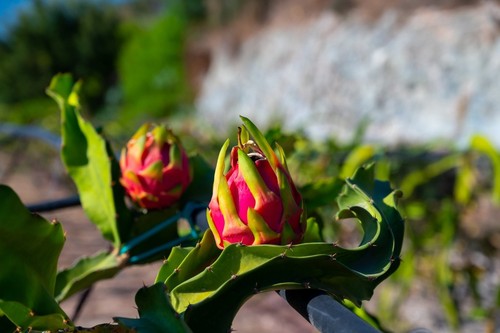
How long does it take for a cactus to sprout new growth?
The time it takes for a cactus to sprout new growth varies depending on the species and growing conditions. Some cacti can produce new development within a few months, while others can take several years.
Providing the right growing conditions, including adequate light, water, and nutrients, is vital to encourage healthy growth.
Why is my cactus growing a long stem and not arms?
A cactus growing a long stem instead of arms may indicate inadequate light. Cacti need plenty of bright, indirect sunlight to grow properly. If a cactus is not getting enough light, it may grow tall and spindly to reach more light. In some cases, pruning the stem can encourage the growth of new arms.
What causes a cactus to grow tentacles instead of arms?
Cacti that grow tentacles instead of arms are usually a result of genetic mutations or stress. These mutations can cause the cactus to produce abnormal growth patterns, including tentacles instead of arms.
Stress factors like extreme temperatures, overwatering, or underwatering can also contribute to abnormal growth patterns.
What are cactus pups, and how do I propagate them?
Cactus pups are small offsets that grow from the base of the parent cactus. It’s possible to remove cactus pups and propagate them to create new plants. To propagate cactus pups, gently remove them from the parent plant and allow them to dry for a few days. Once the cut end has calloused over, plant the pup in a well-draining soil mix and water sparingly.
How do I encourage moon cactus to grow pups?
Moon cacti are grafted plants and do not produce pups naturally. However, some growers have successfully propagated moon cacti by grafting a pup from a different cactus onto the rootstock of the moon cactus. This process can be delicate and should only be attempted by experienced growers.
What should I do if my cactus is becoming etiolated?
If a cactus is becoming etiolated, it is a sign that it is not getting enough light. To correct this, move the cactus to a brighter location or provide supplemental light with a grow light.
Adjusting watering and fertilization to match the new growing conditions is also essential. Pruning the stem may also encourage new growth.

Hey, I’m Lisa and I’ve been an avid gardener for over 30 years. I love writing, talking and living in the garden! Feel free to connect with me on my socials below

